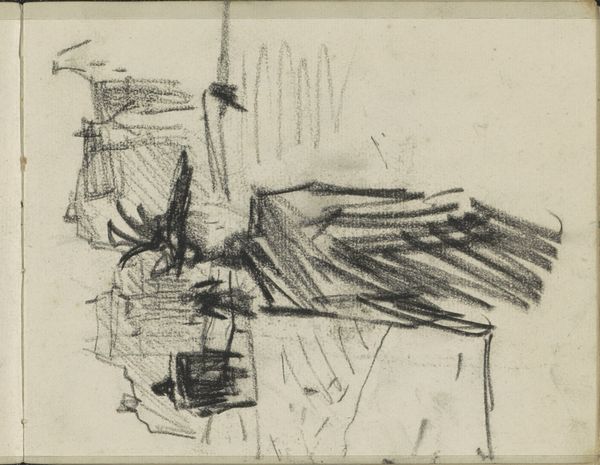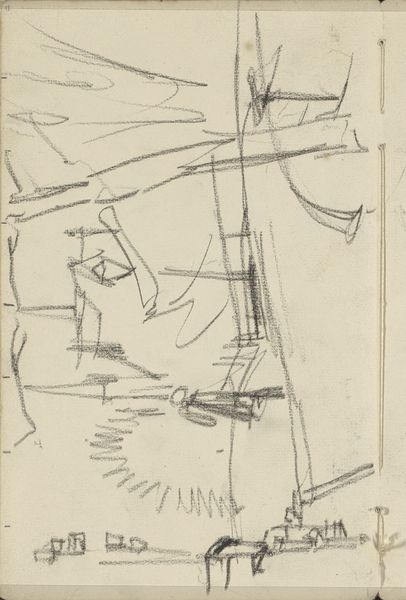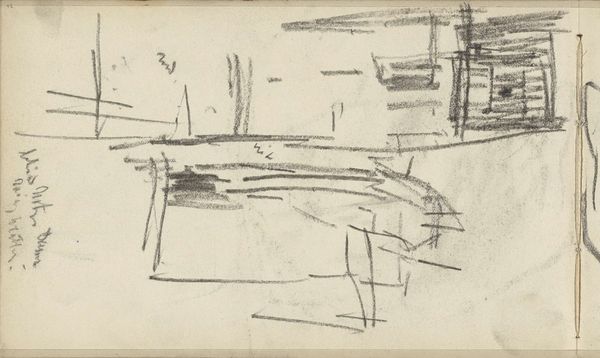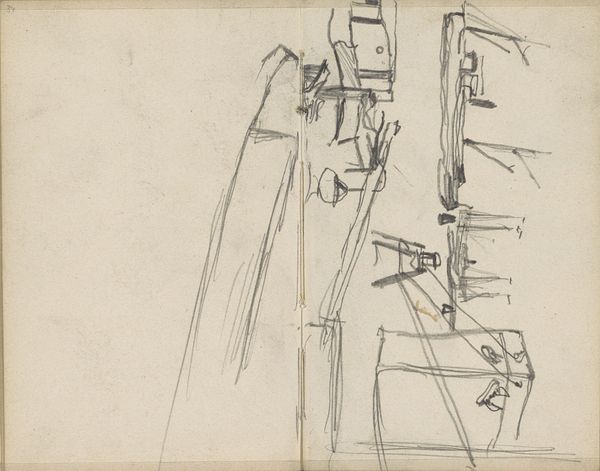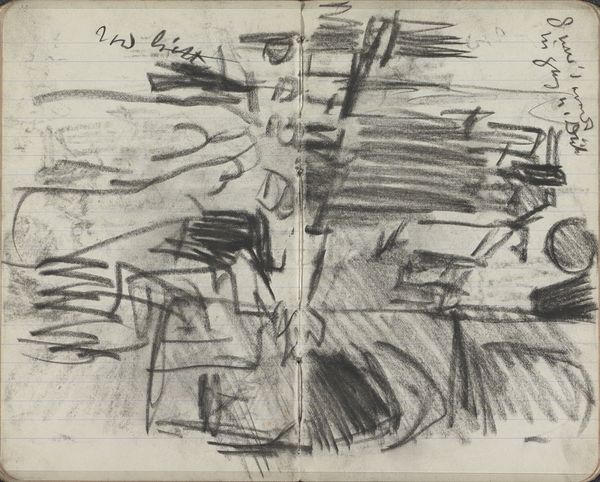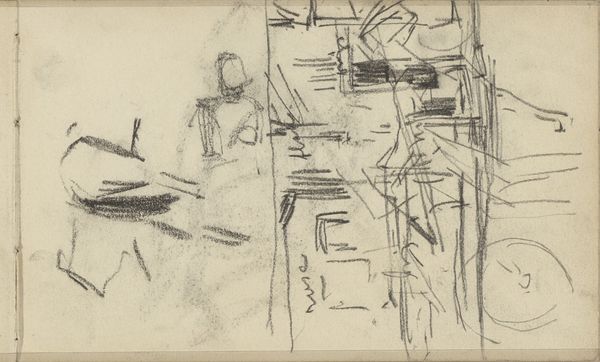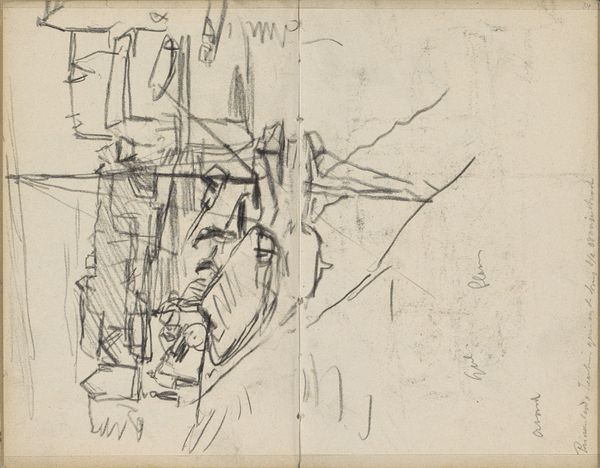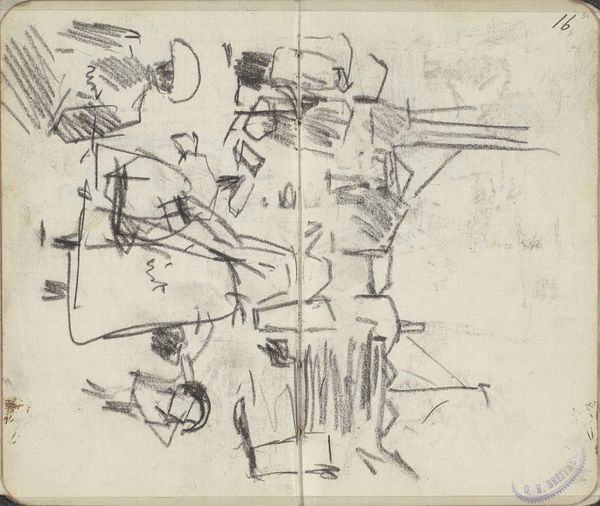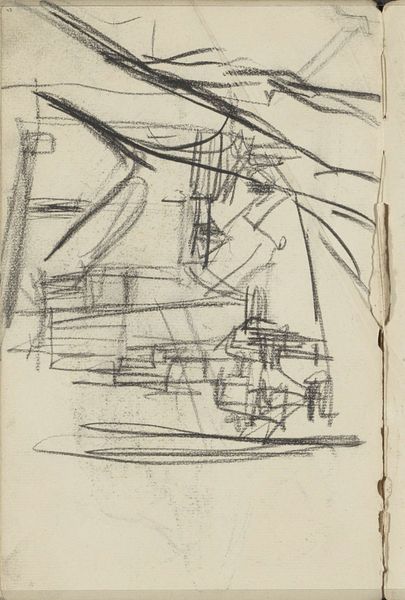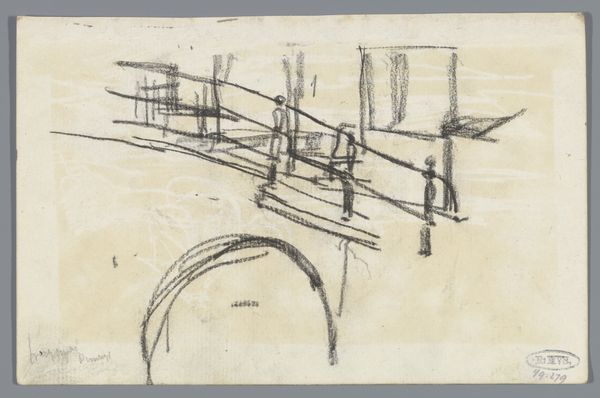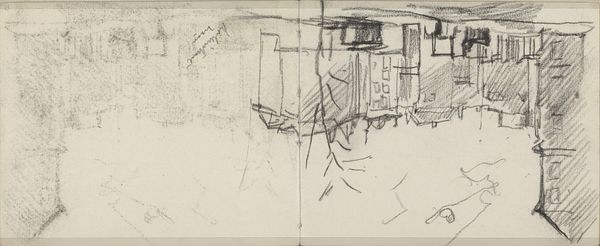
Kalverstraat te Amsterdam, gezien naar de Dam met de Nieuwe Kerk 1886 - 1903
0:00
0:00
georgehendrikbreitner
Rijksmuseum
Copyright: Rijks Museum: Open Domain
Editor: So, this is "Kalverstraat in Amsterdam, looking towards Dam Square with the Nieuwe Kerk," a pencil and chalk drawing by George Hendrik Breitner, sometime between 1886 and 1903. It's just a quick sketch, really, but there’s something so evocative about it. I'm curious, what do you see in this piece beyond just a preliminary drawing? Curator: For me, this isn't just a study; it's a glimpse into Breitner's engagement with a rapidly changing Amsterdam. The Kalverstraat was a vital artery of commerce and social life. What cultural memories do you think this image holds? Editor: Well, I suppose it shows a moment of everyday life, but in a really transient way. Almost as if it might disappear in a gust of wind! It’s so ephemeral. Curator: Exactly! And that ephemerality speaks to a broader cultural anxiety. Consider the rise of photography at the time. Did it threaten the role of painting and drawing, especially in capturing realism? Perhaps this sketch embodies the immediacy that photography couldn't then fully replicate. Editor: So it's not just a drawing, but almost a commentary on the act of seeing and remembering in a modernizing world? Curator: Precisely. The incompleteness invites us to participate, to fill in the details from our own memories and associations. Think about how that incomplete sketch triggers different feelings in different people. Editor: It’s fascinating how much symbolism and thought can be layered into something that looks so simple. Thanks for pointing all of that out. Curator: My pleasure. Art, even in its most "unfinished" state, carries a powerful symbolic weight. It's often the act of creation itself, the choices the artist makes, that reveals the cultural tapestry it reflects.
Comments
No comments
Be the first to comment and join the conversation on the ultimate creative platform.

